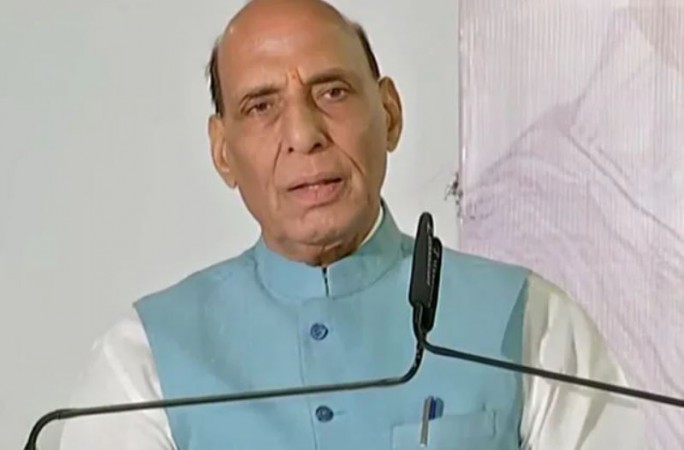
NEW DELHI: India is quickly moving towards joining the 3 armed forces and endeavors are on to have common logistic nodes so that the resources of one service can be made available to the other in a seamless manner, said Defence Minister Rajnath Singh said on Monday.
Addressing the seminar on Army Logistics in New Delhi, Rajnath singh said that India has made rapid progress in the rail sector and over9,000 kilometers of lines have been multiplied in the last 7 years. He said in the five years before 2014, the figure was only 1,900 kms.
The defense minister said that "our objective is to create common logistic nodes so that the resources of one service may be effortlessly made available to other services" and added that "we are rapidly advancing towards interconnectedness of all three services." The participation of officials from all sectors from both sides, the defence minister emphasised, demonstrates the "commitment" to attaining the objective that India wants. He spoke of the necessity of synergy and fusion between civil and military players.
He said that one of the industries that has benefited the most from this relationship is logistics during the event held at the Manekshaw Center in Delhi Cantonment.
How far along has India come with joint warfare?: The Kargil Review Committee was established in the wake of the 1999 Kargil War to examine India's mistakes during the condensed conflict with Pakistan and recommend adjustments to the security structure.
Four task forces were subsequently constituted, followed by the formation of a Group of Ministers. "Integration of the services both with each other and with the Ministry of Defence, the creation of a chief of defence staff, and combined operational commands" were just a few of the many recommendations made.
The development of a common doctrine for the armed forces is one such crucial component of jointness. Future battlegrounds will be more intricate than ever. In the future battlespace, a joint doctrine will bind the joint forces together.
Single service doctrines have distinctive tendencies in terms of how warfare is conducted. It may seem difficult to work toward a shared perspective at first, or the issues between the services may seem insurmountable. These issues can be overcome, though.
India now has two fully operational unified commands: the Strategic Forces Command (SFC), established in 2003, and the Andaman and Nicobar Command (ANC), established in 2001.
Currently, there are 17 single service commands: 7 Army, 7 Air Force, and 3 Navy. These commands are each located at a different base. The Air Defence Command will be the first command established in 2020. As specialised service providers, integrated commands have also been established. These agencies of the Integrated Defense Staff include the Armed Forces Special Operations Division, the Defence Cyber Agency, and the Defence Space Agency.The Information Warfare Command could be established by the Defense Cyber Agency.
The Logistics Command and the Training and Doctrine Command are two other suggested commands. The Defense Planning Committee and the Integrated Defense Staff are essential components of the aterization process.